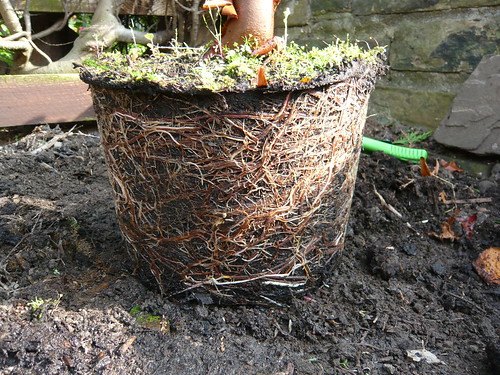Roots and Root Care
Get to he root of the problems of growing great plants.
Basic Roots Knowhow
- Roots grow below the soil to anchor and feed your plants.
- The root only grows longer at the tip. This is where root hairs develop.
- Root hairs take in water and nutrients through a permeable membrane.
- Root hairs are usually fragile and short lived but as one dies one or more grows in its place.
- Generally the root system thickens with age and anchors the plant as well as conveying nutrients to the stems and leaves.
- Active growth tissue called pholem and xylem carry nutients up the plant and sugars back to the roots after photosynthesis.
Water Logging the Roots
- Roots and root hairs need access to air to remain healthy.
- Excess watering can lead to compacted soil which can lead to wilting from an excess water rather than a shortage.
- If plants are kept in soil that is sodden they will die.
- Rescue from water logging will depend on getting the roots dried out and aerated but you may be better off taking cuttings or grafts if the roots are badly damaged.
OverFeeding
- Too much fertiliser can lead to a dangerous build up of salts. This excess fertiliser can leach water from the roots. This leads to wilting, damage and death. Flush out excess salts with clean water.
- Fertiliser applied at too high a dose can burn the delicate root hairs.
- Fertiliser containing too much nitrogen can make a plant soft and sappy. If in any doubt use a balanced fertiliser.
- As a rule, seedlings and young plants need less nutrients than more mature specimens. Take care not to over feed you can kill with kindness.
Root Damage
- Fibrous roots that are damaged can be pruned and hopefully they will regrow.
- Humus or peat around the roots can provide air and help hairs regrow and take in nutrients.
- New plants need to settle in before you restart feeding.
- Root damage to seedlings should be avoided by holding the leaves not the roots or stems. Do not push roots down into soil as it will shear off any hairs. Gently pull soil around the roots.
- Plants with long tap roots dislike being disturbed so bear this in mind when initially locating the plant.
- Damaged taproots can affect the plants stability as they provide crucial anchorage.
- Tubers, corms and bulbs can be damaged by grubs or critters. Prevention is the best care see vine weevils and Unwanted Garden Animals
Roots in Propagation
- Read more about taking root cuttings.
- Grafting a new plant onto established and healthy root stock is a good way to increase the stock of a plant. Roses and apples are often grafted.
- Root vegetables like leeks, carrots and parsnips throw up a hard core to support the flowering stem prior to seeding. By this time the vegetable is past its best for eating.
- Corms, tubers and bulbs may split under ground to provide more plants. Some roots spread by stolen (underground tendrils)
Root Diseases
- Honey Fungus has black bootlace like threads growing on the roots and clumps of honey coloured toadstools. It can quickly kill a tree or give it a slow lingering death. Dig out and burn infected plants there is no chemical cure. Honey fungus attacks trees and shrubs including Box, Chestnut, Fir and Holly.
- Root rots include Phytophtora water mould where a blackish ooze comes out of the trunk at soil level.
- Butt rot is a dark red fungus at ground level with fine white filaments penetrating the trunk and is most common in conifers.
- Fomes root rot is caused by the pathogenic woodâ€rotting bacteria in pine plantations.
- Crown Gall is a bacterial disease that enters a shrub via a wound. White galls form on top of the roots, turn black and block the circulation of sap leading to death. Euonymus, Rhododendrons and Currants are susceptible. Avoid by improving soil drainage and feeding with high phosphate and potash feed.
- In many cases a healthy plant can outgrow an infection, and the grower won’t even notice that a pathogen is active.
- Rose replant sickness is not primarily a root disease but a problem of reestablishment in old soil.
Other Root and Care Issues
- Suckers grow on roots often on plants that have been grafted. The original root stock is trying to revert to type and if left will take over. Remove suckers where they join the main root by pulling rather than cutting them off or they may regrow.
- Roots can become pot bound in containers. Avoid buying plants where the roots have filled the pots and are going round and round or forcing there way out of the bottom of a pot.
- Aerial roots grow above ground and take moisture from the air for example on some orchids. They are good roots and should not be removed.
- Adventitious roots develop on stems to help climbers cling to support. Ivy and Hydrangea petiolaris use these roots which provide no nutritional value.
- Roots of aquatic plants, perforce live in water and do not have the same hairy structure of other roots.
- Forked roots on crops grown as root vegetables like Carrots and Parsnips are caused by soil conditions. Remove stones and dig deeply and evenly as even an excess of manure in one spot may create a fork.
Root Crops
